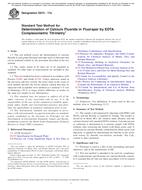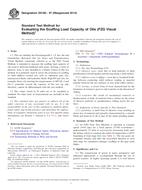1.1 This practice covers procedures to be used in the preparation of lubricants or their components for toxicity testing in aquatic systems and in the interpretation of the results of such tests.
1.2 This practice is suitable for use on fully-formulated lubricants or their components that are not completely soluble at the intended test treat rates. It is also suitable for use with additives, if the additive is tested after being blended into a carrier fluid at the approximate concentration as in the intended fully formulated lubricant. The carrier fluid shall meet the above solubility criterion, be known to be minimally toxic in the toxicity test in which the material will be tested, and be known to have a chemical composition similar to the rest of the intended fully formulated lubricant.
1.3 Samples prepared in accordance with this practice may be used in acute or chronic aquatic toxicity tests conducted in fresh water or salt water with fish, large invertebrates, or algae. This practice does not address preparation of samples for plant toxicity testing other than algae.
1.4 Standard acute and chronic aquatic toxicity procedures are more appropriate for lubricants with compositions that are completely soluble at the intended test treat rates (1, 2, 3, 4, 5).
1.5 This practice is intended for use with lubricants or lubricant components of any volatility.
1.6 This practice does not address any questions regarding the effects of any lubricant or lubricant component on human health.
This standard does not purport to address all of the safety concerns, if any, associated with its use. It is the responsibility of the user of this standard to establish appropriate safety and health practices and determine the applicability of regulatory limitations prior to use.
Product Details
- Published:
- 06/01/2004
- Number of Pages:
- 7
- File Size:
- 1 file , 65 KB


